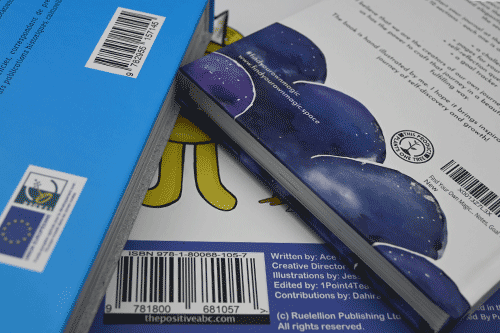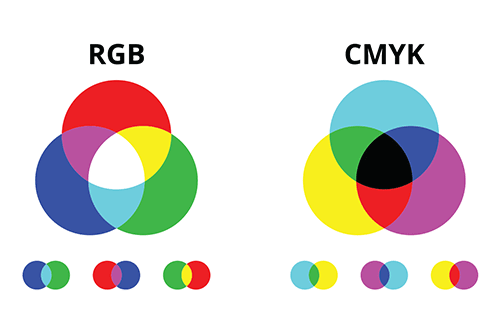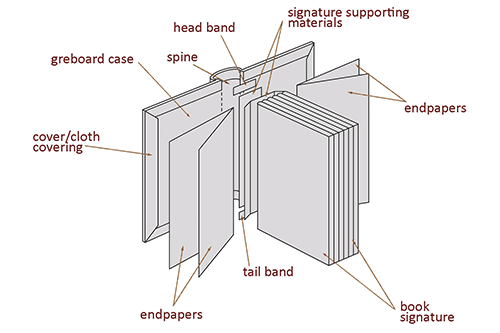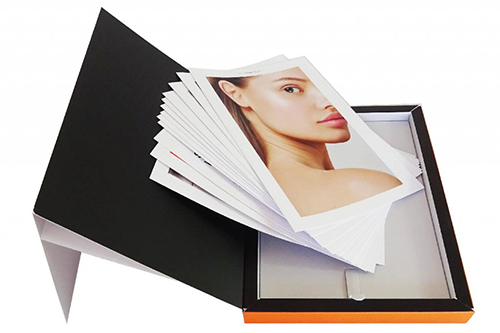Anatomy of the Book
If you have not thought about what parts a book consists of, but you already have a text ready to be published, it will be good to get acquainted with the most basic elements. Because these elements will be mentioned and discussed while communicating with a printing house or publishing house.
Book signatures
A book signature is a sheet of paper consisting of four or more printed pages and folded one or more times to the approximate size of one page of a future book or other printed product. It folds in a way that puts the pages in the correct order. A whole sheet of paper 70x100cm, 64x90cm, or another size can have a different number of signatures. The number of signatures in a whole sheet is determined by how many pages there are in each signature, and the number of pages depends on the size, type of paper, paperweight, and the type of binding.
Book body
Also known as a book block, the book body consists of sheets or book signatures that can be bound. This does not include the front and back pages, which are additionally glued to the body, like the endpapers.
Covers
The outer part of the book, which surrounds the book block to protect it during use and storage, and, of course, serves as a way to communicate with the client after graphic design, printing, and decoration. The two main types of binding of modern books are hard and softcover:
Apply
– Lamination
– Varnishes
– Metalized papers
– Embossing/Debossing
– Hot stamping
Softcover (Paperback)
Flexible and thick paper (thickness over 0.30 mm) is used to make the cover of a paperback book. The paper body is fastened to the cover by gluing (usually or PUR).
Hardcover
To make the cover of a hardcover book, cardboard with a thickness of 1.5 mm to 3 mm is used. The bulkier the body, the greater the thickness of the cardboard.
Flaps
The flaps are a continuation of the paperback, folded to the inside of the book. They can perform the same function as the hardcover cover, providing more space for presentation and marketing, a summary or additional layout. Of course, you can leave all this space free or add just a little emphasis. The flaps have a functional value that allows the reader to use them as a divider. You can choose to have two flaps or just one.
Cover
Covering/Cloth covering is the material used to cover the cardboard. The cardboard should be covered to have a better aesthetic appearance of the hard cover. It is usually covered in paper, cloth, leather or imitation leather. There is also a possibility for a mixed option: the cover of the cardboard could be made of paper, and only the spine – left as is. Some artists leave the cardboard without covering it in paper or cloth. Between the cardboard and the covering paper/cloth you can add foam, which gives extra volume and softness. Cloth covering does not allow standard offset printing and requires the use of techniques such as embossing, hot stamping or screen printing.
Choose
– Coated papers
– Uncoated papers
– Art papers
– Recycled papers
Spine
This is the part of the book where the cover material hides the set of book signatures. It is the part that is visible when the book is placed on the shelf. Usually the name of the work is written, and the name of the author, and the number of the book in the series (if it is a part of a series). The spine of the hard cover can be straight or rounded. The rounded back is preferred especially for a larger number of pages of the book, as it gives it elegance.
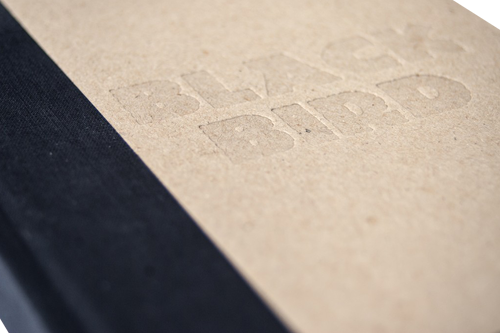

Spine with cloth and cardboard debossed
Endpapers
These are the pages, usually white, that are always glued to a hard cover. Their purpose is to make the binding between the book body and the cover stronger. Usually one endpaper consists of 2 sheets (4 pages). The front endpaper is glued with its first page to the back of the front cover, the back with its fourth page to the inside of the back cover. Logically, the pages of the endpapers, which are glued to the covers, are left white. At your request, the other pages of the endpapers can have a print with text, illustration or image. They can be without printing, but instead with colored paper (such as offset) in different colors to match the design of the book.
Add
– Hot stamping
– Dust Jackets
– Die-Cutting
– Slipcase
– Fore-Edge

Endpapers with print
Head and tail band
Head and tail band is a small piece of canvas added at the top and bottom of the spine of the book, between the body and the cover. It is glued to strengthen the spine and eliminate the gap between the book body and the hardcover, when the book is closed. It also has a decorative, aesthetic significance. It can be in different colors. The head and tail band must be added for spines exceeding 10 mm.
French groove (gutter/joint)
Represents the place where the back passes into the cover. Its shape is not straight, but slightly concave – like a gutter.
Ribbon bookmark
It is a more elegant version of the classic paper divider. It is a thin piece of cloth glued under the head-band and serves to mark the pages read. For more sophistication, there may be two bookmarks in different colors instead of one. The rbbon bookmark is completely suitable in works of art, and the possibilities for numerous color shades combine the useful with the sophisticated.
Check our price: it’s free and it only takes seconds!















